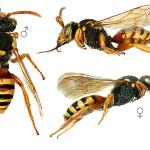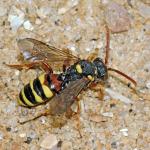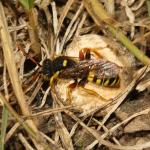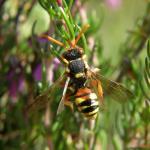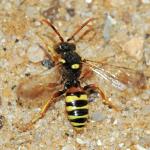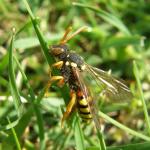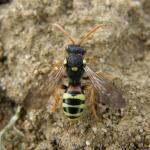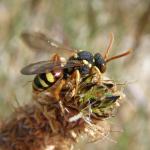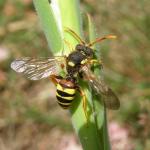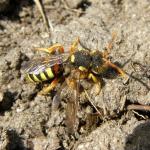This medium-sized Nomada has an overall pattern of yellow and dark brown stripes on the abdomen, with the first tergite a clear reddish brown. It can be most easily found flying over large nesting aggregations of its host bee, Andrena flavipes.
Although considered rare by Saunders (1896), during the 1930s and 1940s it was clearly widespread and abundant in some widely dispersed localities (The Natural History Museum, London, collection and Chambers (1949)). During the 1970s the species was decidedly local, with most known sites being on the south coast of Dorset and this Nomada was absent from many large nesting aggregations of Andrena flavipes. It has since spread to become an almost certain companion of the Andrena throughout much of its range. Nomada fucata is now widely distributed throughout southern England, and the south Wales coast. Also occurs on the Channel Islands. Widespread in Europe, from France to the Middle East, and north Africa.
This species is listed as Notable A in Falk (1991). However, its current abundance suggests that this status should be revised.
Found in a wide variety of habitats including heathland and heathland edge, roadside verges, post-industrial sites, calcareous grassland, banks and lawns in towns and villages, soft rock cliffs and undercliffs. Almost anywhere where its host, Andrena flavipes, is present
Bivoltine; April to June, July and August.
In England it parasitises the nests of Andrena flavipes
The species has been found at a wide variety of flowers with short corollae.
No information available.
2002


